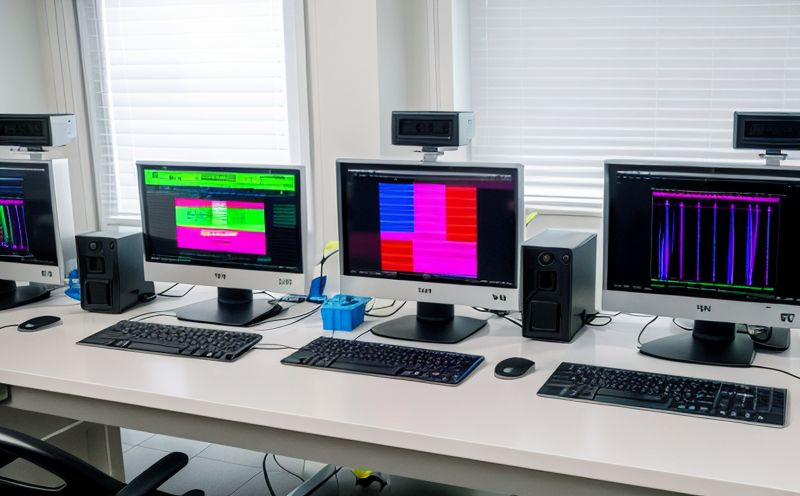AOAC 2017.01 Viral Pathogen Rapid Detection in Clinical Samples
The AOAC 2017.01 standard method provides a rapid, accurate, and reliable means of detecting viral pathogens directly from clinical samples. This method is particularly valuable for identifying the presence or absence of specific viruses in patient specimens, which is critical for timely diagnosis and treatment decisions.
This service focuses on the direct detection of viral nucleic acids using quantitative real-time polymerase chain reaction (qPCR). The protocol aims to minimize the time required from sample collection to obtaining results, ensuring that healthcare providers can make informed decisions promptly. The AOAC 2017.01 method is compatible with a wide range of clinical specimens including blood, urine, nasopharyngeal swabs, and other body fluids.
The testing procedure begins by collecting the sample into a suitable container. Once received at our laboratory, the sample undergoes rigorous quality control checks to ensure integrity before proceeding to nucleic acid extraction. This step is crucial as it ensures that the extracted DNA or RNA is free from contaminants which could lead to false positives.
Following extraction, qPCR reagents are added to the samples in preparation for amplification. During this process, primers and probes specific to the target virus sequences are used to amplify minute quantities of viral nucleic acids present in the sample. The amplified products are then analyzed using fluorescent detection technology incorporated into real-time PCR machines.
Our laboratory employs state-of-the-art instruments such as ABI 7500 Fast Real-Time PCR System, which allows for high sensitivity and specificity in detecting even small amounts of viral nucleic acids within clinical samples.
The resulting amplification data is analyzed using dedicated software that calculates cycle threshold (Ct) values indicative of the initial concentration of target DNA or RNA. Lower Ct values suggest higher concentrations of the targeted virus, while higher values indicate lower levels or absence of the virus in question.
Our AOAC 2017.01 service guarantees accuracy and precision by adhering strictly to all guidelines set forth by this international standard. This ensures that our results are both reproducible across multiple runs and consistent with those obtained at other accredited laboratories performing similar tests.
In addition, we provide detailed reports outlining the specific viral species detected along with their respective Ct values. These reports serve as valuable tools for healthcare professionals in diagnosing infections caused by these pathogens effectively.
By offering this service, our laboratory aims to contribute significantly towards enhancing public health outcomes through rapid identification of potentially harmful viruses early on during an outbreak or individual case.
Scope and Methodology
The AOAC 2017.01 standard method encompasses the entire process from sample preparation to final result reporting, ensuring accuracy and reliability throughout each stage. It specifies detailed procedures for extracting viral nucleic acids from various clinical specimens like blood, urine, or respiratory tract samples.
- Sample Collection: Proper collection techniques are outlined in detail to ensure that the sample contains sufficient quantities of viable virus particles necessary for successful detection.
- Nucleic Acid Extraction: This step involves gentle disruption of cells followed by extraction using appropriate buffers and kits. The efficiency of this process directly impacts the quality of subsequent amplification steps.
- qPCR Reaction Setup: Specific concentrations of reagents including primers, probes, and water are mixed according to prescribed ratios ensuring optimal conditions for efficient amplification reactions.
- Data Analysis & Reporting: Results obtained from qPCR machines undergo thorough interpretation using specialized software. The final report includes information about detected viral species along with their respective Ct values interpreted in light of clinical significance.
The AOAC 2017.01 standard ensures consistency and accuracy across different laboratories globally, making it an ideal choice for organizations seeking standardized procedures in viral pathogen detection within the healthcare sector.
Benefits
- Timely Diagnostics: Rapid turnaround times mean faster diagnosis and initiation of appropriate treatments improving patient outcomes significantly.
- Precision Results: High sensitivity and specificity provided by qPCR technology ensure precise identification even when dealing with low viral loads.
- Compliance & Accreditation: Adherence to international standards like AOAC 2017.01 ensures compliance with regulatory requirements enhancing trust among clients and stakeholders alike.
- Cost Efficiency: Early detection reduces the need for further diagnostic tests thereby saving time and resources.
The implementation of this service offers numerous advantages including enhanced accuracy, reduced turnaround times, and cost savings for healthcare providers. By leveraging advanced technologies like qPCR within a framework defined by AOAC 2017.01, our laboratory delivers reliable results that support effective clinical decision-making processes.
Quality and Reliability Assurance
The AOAC 2017.01 method has been rigorously validated through numerous studies demonstrating its reliability in detecting viral pathogens accurately and consistently across different laboratories worldwide.
- Inter-laboratory Comparisons: Participating in inter-laboratory comparisons allows us to assess our performance against peers, ensuring that our results are comparable globally.
- Proficiency Testing Programs: By participating in proficiency testing programs administered by organizations such as the College of American Pathologists (CAP) and other relevant bodies, we demonstrate our commitment to maintaining high-quality standards.
- Regular Equipment Calibration: Our instruments undergo regular calibration using certified standards ensuring precise measurements essential for accurate detection.
These measures contribute significantly towards establishing trust among clients knowing that they can rely on consistent and dependable results from our AOAC 2017.01 viral pathogen rapid detection service.





